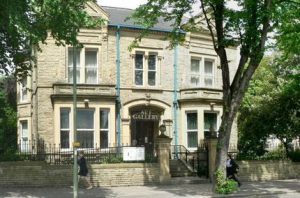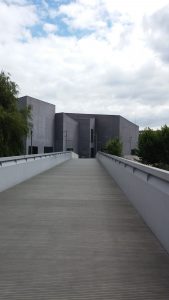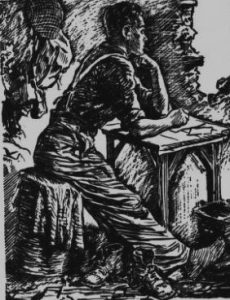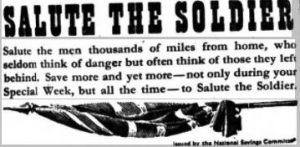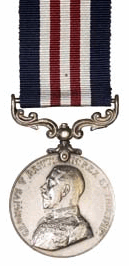Wakefield Express 2 Sept 1944
Dead on the Beach – ~An open verdict was returned at an inquest held this week in Berwick, on the body of Trooper Joseph Gamble, whose home was at Chapel House, Crofton. The deceased disappeared from his unit early in the last month, after visiting the medical officer. The body was found on the beach by a holiday-maker. Deceased was called up in August, 1939, and left England the following year. After serving in Palestine he went through the Syrian campaign, and was with the Eight Army throughout the North African fighting. He was wounded whilst in Tripoli and subsequently he was regraded and sent home to England. The funeral took place at Berwick Cemetery last Monday.
Brothers met in India – Mrs Dickinson, 3 Hambleton Street, Wakefield, has received a letter from her husban Corporal Stanley Dickinson, stating that he has met his younger brother, Signalman Jack Dickinson, in India, and spent a short leave together. Corporal Dicki inson, before the war was employed at the Reaicut Wool Co., and he served two and a half years in the N.F.S. at Horbury. His brother was employed on the railway, and is an old scholar of Thornes House School.
Wounded in France – Mr and Mrs Sherwood, 23, Esther Avenue, Lupset, have received news that their son, Driver R Sherwood, has been wounded in France, and is now in hospital somewhere in England. Prior to joining the Forces he was employed at Messrs, G Brook and Sons brick-works. He was educated at St Austin’s School.
Progressing Favourably – Private R Wormald, K.O.Y.L.I., who was wounded in Normandy on July 27th is reporte to be progressing favourably in a hospital in Birmingham. He is the son of Mr and Mrs L Wormald, 113 Aberford Road, Stanley. He has also served in Norway and Iceland, and before the war he was employed by Sydney Raines Ltd., Wakefeld. His wife is in the W.L.A.
Killed in Action – News has been received by Mr and Mrs F Dobson, 2, Saville Street, Emley, that their son Pte., R E Dobson, has been killed in the Burma fighting. He joined the Forces in September. 1939, and went overseas in December of the same year. He was previously employed at Armitage’s, Shelly.
Additional information :-
Trooper Joseph Gamble – Joseph Herbert Gamble, was the son of George and Sophia Gamble. Joseph served in the KOYLI, as Private 410047. He died aged 30 years on the 24th of August 1944 and rests in Section C A Grave 1349 in Berwick-upon-Tweed Cemetery along 56 other casualties of war.
R E Dobson, was Robet Ebinor Dobson who served as Pte., 4748477 in the York and Lancaster Regiment. The son of Frederick Ebinor Dobson and his wife Lily. He was married to Vera and lived in Shelley. He was killed in action n the 5th of August 1944, aged 26 and rests in Taukkyan War Cemetery, Myanmar (Burma). The cemetery is approximately 6o minutes drive from the centre of Rangoon. According to the Commonwealth War Graves Commission :-
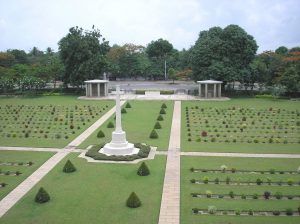
Taukkyan War Cemetery via CWGC
“TAUKKYAN WAR CEMETERY is the largest of the three war cemeteries in Burma (now Myanmar). It was begun in 1951 for the reception of graves from four battlefield cemeteries at Akyab, Mandalay, Meiktila and Sahmaw which were difficult to access and could not be maintained. The last was an original ‘Chindit’ cemetery containing many of those who died in the battle for Myitkyina. The graves have been grouped together at Taukkyan to preserve the individuality of these battlefield cemeteries
The cemetery now contains 6,374 Commonwealth burials of the Second World War, 867 of them unidentified.
In the 1950s, the graves of 52 Commonwealth servicemen of the First World War were brought into the cemetery from the following cemeteries where permanent maintenance was not possible: Henzada (1); Meiktila Cantonment (8); Thayetmyo New (5); Thamakan (4); Mandalay Military (12) and Maymyo Cantonment (22).
Note :- The Wakefield Express includes images of each of the soldiers included

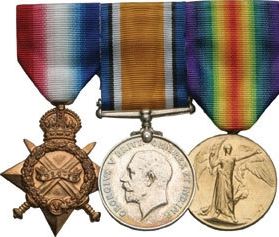 The Medal Card for Sydney tells that he enlisted as a Private and entered France in April of 1915 and later attained the rank of Serjeant. He was eligible for the 1915 Star, along with the British and Victory Medals – Pip, Squeak and Wilfred.
The Medal Card for Sydney tells that he enlisted as a Private and entered France in April of 1915 and later attained the rank of Serjeant. He was eligible for the 1915 Star, along with the British and Victory Medals – Pip, Squeak and Wilfred.